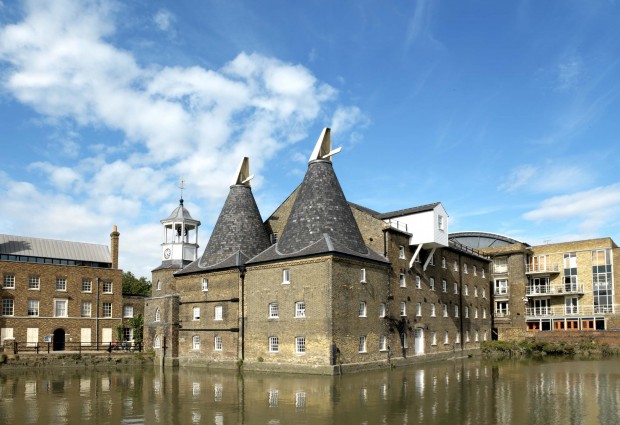Make sure your volume is on: "Barry remembers the distillery in action"
Show transcript
What exactly was Three Mills?
Originally it was a monastery, but then it was taken over by Nicholson’s Gin. That’s who the owners was when I moved there. It was a distillery. I mean, there was packers, there was bottlers. Typical old school … cloth caps still, coopers running about…everyone was busy. Old trucks, there would be trucks coming and going all day long. It was not only a bonded warehouse, but they bottled there as well. They bottled scotch, gin.
All different sorts of barges, different sizes, some twenty foot, up to forty foots, some even bigger, it depends. Some dragged another one.
Typical barge people – I liked them, I got on with them. They was always friendly people, very friendly. You’d hear them singing in the evenings, they’d be moored up the side of the island. I suppose it was like someone having a caravanette, they’d have the whole family. Their kids would be with them, everyone would be with them. I used to think to myself, “Cor, when I was their age, I had to go to school!”
